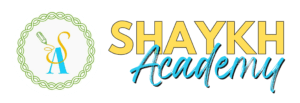Lesson 22 – A Team of Workers
Things to do
1. Enact the play.
Ans: Students must do this on their own.
2. Read the following words. From the lesson, find rhyming words for each.
take
Ans: make
hop
Ans: stop
you
Ans: do
near
Ans: hear
rest
Ans: best
bite
Ans: right
deceive
Ans: receive
3. Now think of rhyming words for the following on your own.
mouth
Ans: south
feet
Ans: meet
wrong
Ans: song
dry
Ans: cry
weak
Ans: seek
tired
Ans: fired
4. With the help of this play, write what the following body parts do:
Hands
Ans: The hands are used to hold things, carry things, give handshakes, etc.
Feet
Ans: The feet used for walking, running, jumping, dancing, etc.
Eyes
Ans: Eyes are used to view or see. It also has open, close, and blink functions.
Ears
Ans: The ears hear all the sounds of the surrounding area.
Nose
Ans: The nose is used for respiration.
Mouth
Ans: The mouth is used for eating and chewing food.
Belly
Ans: The belly digests the food, does proper stomach digestion work, and gives energy to all parts of the body.
Put the names of the body parts in alphabetical order.
Ans: Belly, Ears, Eyes, Feet, Hands, Mouth, Nose
5. Name the body parts that work together when we do the following –
Ride a bicycle
Ans: Legs, hands and eyes.
Swim
Ans: Hands, eyes and legs.
Write the answer to a question
Ans: Hands, eyes and brain.
Eat our favourite dish
Ans: Eyes, hands, mouth and tongue.
Go home when someone at home calls
Ans: Eyes, ears and legs.
Climb a ladder
Ans: eyes, hands, legs.
Choose and pick up a ripe mango from a box of mangoes
Ans: eyes, hands and nose.
Make a phone call
Ans: eyes, hand, mouth and ears.
Take a bath
Ans: eyes, hands and legs.
Switch off lights and fans in another room if there’s no one there.
Ans: eyes, hands and legs.
6. Complete the following sentences using your own ideas.
For example, Lift: “Lift a heavy bag.”
Put
Ans: Put the book back on the shelf.
Make
Ans: Make a delicious sandwich using fresh ingredients.
Hold
Ans: Hold the door open for the person behind you.
Pull
Ans: Pull the plug to stop the water flow.
Read
Ans: I can read your message loud and clear.
Carry
Ans: Carry your umbrella in case it rains later.
Push
Ans: Push the door gently to avoid making noise.
Eat
Ans: Eat your vegetables for a healthy diet.
7. If one body part is ill or injured or unable to work, how will the other body parts help? Write about one such occasion with the help of your experience or imagination.
Ans: We can imagine how difficult it would be if any part of the body were injured. All parts of our body are important because we work with every part of it. When one body part is injured, others compensate to maintain function. For example, if a leg is hurt, the other leg might take on more weight, hands could help with balance, and the brain manages pain and coordination.
